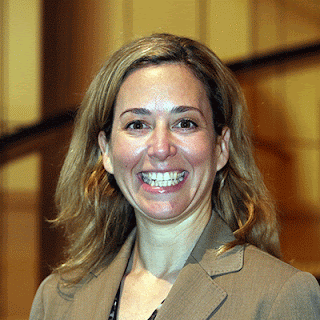 |
| Carmen Krueger, SAP NS2 SVP & GM |
While SAP is globally renowned as a provider of enterprise management software, the name is hardly ever associated with the spooky world of intelligence. That is one reason why I jumped at the opportunity to talk with SAP executives responsible for the company’s work in that clandestine marketplace.
SAP National Security Services, Inc.™ (SAP NS2™) is an independent U.S. subsidiary of the company and offers a full suite of SAP enterprise applications, analytics, database, cyber security, cloud, and mobility software solutions. These offerings, however, are endowed with specialized levels of security and support needed to meet the unique mission requirements of US National Security Agencies and critical national infrastructure customers. SAP NS2 also provides secure consulting and support services from experts that hold current credentials in the national security space.
Carmen Krueger, Senior Vice President & General Manager, Cloud Operations, focuses on the critical security requirements of national security clients that adopt and deploy SAP technologies.
Joining her in our discussion was
Hunter Downey, NS2 Cloud Solutions Director.
 |
| Hunter Downey, NS2 Cloud Solution Director |
Kevin: Carmen, Hunter, thank you both for spending the time to talk with me. Just to set a level playing field for my readers, what is SAP?
Carmen: SAP is a global enterprise software company that offers a full suite of world-class enterprise applications, analytics, database, cyber security, cloud, and mobility software solutions. Corporately our goal is to make a material impact on making the world better.
Kevin: Why is cloud computing so important to public sector organizations?
Carmen: Cloud computing is critical because it combines convenience with speed and delivers the innovation needed for addressing the public sector’s current inability to leverage leading edge technologies. It enables resource pooling that drives efficiencies, cost savings and improved resource allocations. The various cloud computing service and deployment models also provide flexibility to organizations while allowing them to remain within their specific mission limits and requirements.
Hunter: With cloud computing organizations are able to extract physical resources and give them to agencies as needed. These resources can grow and contract over time, adapting to the users. IT infrastructure is now morphing into a platform that give agencies an ability to focus dollars towards more strategic needs.
Kevin: How are public sector policies when it comes to cloud computing?
Carmen: The cloud computing adoption process has matured significantly. DoD’s new policy has set in motion a re-interpretation of current policies that actually favor cloud. There are, however, still some open questions on the policy, change management and organizational risk management processes. The new policy has put a “set of guardrails” around the cloud computing decision making process. Although procedural backlogs remain, things are moving forward and enablers are now in place.
Kevin: How should agencies approach the adoption of cloud computing?
Carmen: In adopting cloud, decision makers must clearly understand the goals of the organization and see cloud computing as an enabler and strategic underpinning of specific business outcomes. Cloud computing enables collaboration between functional owners, information technology leads and the information assurance organization. All too often functional owners run ahead of other organizational stakeholders. This leads to organizational misalignment and adoption missteps. It is also vitally important to get the organizations “cloud jargon” in line. The mixing of marketing terms and technical descriptions often leads to serious misunderstandings during the cloud computing adoption process.
Kevin: SAP provides
ERP software which is typically considered a difficult application to move to the cloud. Why is this? Has this changed?
Carmen: ERP applications are not more or less difficult to move to the cloud than other applications. ERP is, however, mission critical so organizations normally assign higher levels of risk to such a transition. These risks are not typically associated with technical barriers but are mostly organizational change management issues.
Hunter: The value in transitioning ERP to the cloud is often much more substantial because it gives the organization news ways of accessing and using information. It is also often easier to try out new capabilities.
Kevin: SAP’s cloud portfolio has really expanded over the past couple of years. Are you leading your customers to the cloud or following them there?
Hunter: We are side-by-side with our customers as they move to the cloud. We are not being presumptive in any way but work closely with hem in defining technical requirements and strategies.
Kevin: What are the nuances in the selection of an appropriate cloud deployment model?
Carmen: A community cloud, like IC ITE (Intelligence Community Information Technology Environment) is always a viable option for national security organizations. Private cloud environment are also a popular choice. Over the next two years SAP’s ability to offer
NIST,
FedRAMP and
Trusted Internet Connection (TIC) compliant environments will expand. Today we currently have a secure
HANA cloud offering in place as a PaaS (Platform-as-a-Service). It complies with all export and FedRAMP requirements. A Human Resource Management (HRM) SaaS (Software-as-a-Service) offering that meets all DoD requirements is also being built.
Kevin: What is HANA and how does it relate to cloud computing?
Hunter: HANA is an in-memory, column-oriented, relational database management system. Its architecture is designed to handle both high transaction rates and complex query processing on the same platform. This approach has completely transformed the database industry by combining database, data processing, and application platform capabilities in a single in-memory platform. The platform also provides libraries for predictive, planning, text processing, spatial, and business analytics.
HANA has been adopted to support many national security use cases. It is being used as a platform for data analytics, situational awareness, digital documents and geospatial analysis. Since the database is stored in RAM (Random Access Memory) it provides the easiest known method for accessing and using information. When you combine HANA and the cloud in a national security focused PaaS, there is no need for agencies to procure and incorporate any new hardware.
Kevin: What’s next for agencies after they’ve adopted a cloud infrastructure?
Carmen: Decision makers should make the adoption of cloud computing risk free. They should also look across all their different programs in order to identify where cloud can deliver strategic value to the enterprise. Also highlight your successes in cloud. Cloud computing shortens the timeline between understanding an information gap and addressing these gaps. It does this by eliminating programmatic silos that prevent the free flow of information. Embrace this new approach and don’t be so prescriptive when addressing information shortfalls. Learn how to listen to the data and how to learn from it.
( This content is being syndicated through multiple channels. The opinions expressed are solely those of the author and do not represent the views of GovCloud Network, GovCloud Network Partners or any other corporation or organization.)
( Thank you. If you enjoyed this article, get free updates by email or RSS – © Copyright Kevin L. Jackson 2015)
Follow me at https://Twitter.com/Kevin_Jackson



